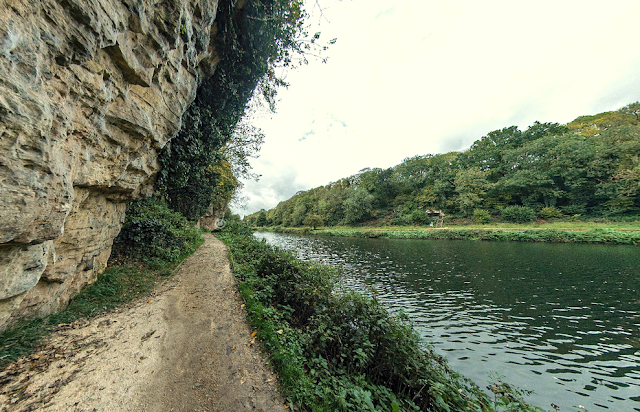As we're now entering the last quarter of 2023 it's worth a quick look back at what we've achieved so far this year.
The year began with a weekend project to investigate brickwork which had been noted below ground some years ago in the yard of Albrighton church. There were no recorded graves in the area and, being close to the site of a ancient building, there was the possibility of building foundations or a cellar. By the end of the dig we knew exactly what we'd found - a pair of brick-built tombs which are almost certainly occupied by a vicar and his family. Despite being the longest-serving vicar in the recorded history of the parish, the location of the grave had for some reason been lost, a wrong that we have finally righted.
 |
The rediscovered tombs at Albrighton
|
A project begun in the summer of 2022 continued until July and finally yielded results. We'd been searching a vast area for a moated site which probably dated back to the medieval era. Despite geophys surveys and over 40 test pits, Georgian landscaping and World War II construction served to frustrate us until we finally discovered one arm of the moat and the rubble from whatever stood on the island within. Another successful project which we hope to continue in the future.
 |
Worked sandstone blocks and sandstone fragments at the edge of the moat forming a revetment for the building platform
|
Our next dig was a return to Himley Hall near Dudley, where we've done extensive work in the past. Over a dozen diggers were involved on each day of what turned out to be the hottest weekend of the year, with temperatures around the 30 degree mark. The excellent attendance meant we were able to dig a larger than usual test pit of 2x1 metres all the way down to natural at around 1.25m deep. Finds included many sherds of locally made cooking pots dating from the 12th to 13th century and the resulting stratigraphy was quite spectacular (see earlier post for details). We'll be revisiting this fascinating site soon!
 |
Rim sherd from 12/13th century cooking pot and its profile (below)
|

What will we discover in the final quarter of the year? Who knows, but as is always the case, we can guarantee it will include some surprises!













%20WAMS%20p1.jpg)













